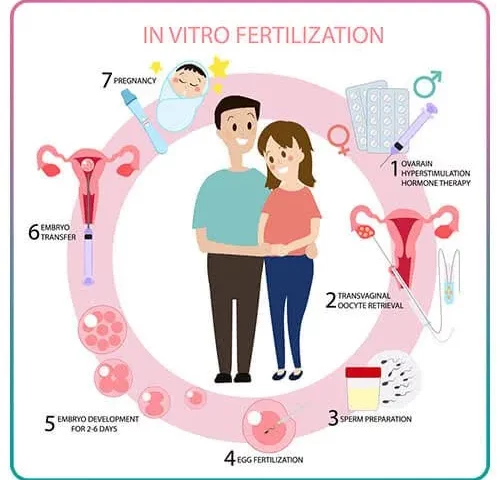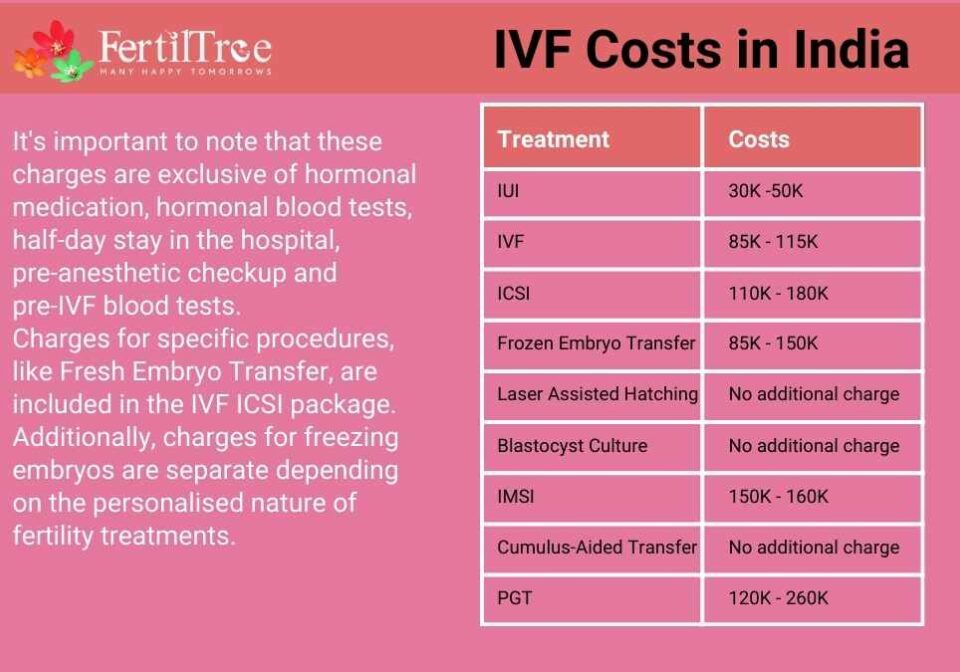
How Many Births Are From IVF? Exploring the Numbers, Trends, and What It Means for You
April 9, 2025
What Did the IVF Bill Contain? A Deep Dive into Its Impact and Meaning
April 9, 2025What Does IVF Cost? Your Guide to Understanding In Vitro Fertilization Expenses

What Does IVF Cost? Your Guide to Understanding In Vitro Fertilization Expenses
Starting a family is a dream for many, but when natural conception isn’t an option, in vitro fertilization (IVF) often steps in as a beacon of hope. If you’re reading this, chances are you’ve heard about IVF and are wondering: What does it actually cost? It’s a big question—and one that doesn’t come with a simple answer. IVF expenses vary widely based on location, personal needs, and a bunch of other factors we’ll unpack together. Whether you’re just curious or seriously considering this path, this guide will break it all down in a way that’s easy to digest, with practical tips, fresh insights, and a few surprises along the way. Let’s dive in!
The Big Picture: What You’re Paying For with IVF
IVF isn’t just one procedure—it’s a journey with multiple steps, each carrying its own price tag. At its core, IVF involves retrieving eggs, fertilizing them with sperm in a lab, and transferring the resulting embryo into the uterus. But the process is more complex than that, and the costs reflect it. On average, a single IVF cycle in the United States ranges from $12,000 to $25,000, according to recent estimates from fertility experts and clinics. That’s a hefty chunk of change, and it’s only the starting point.
Here’s what that price typically includes:
- Monitoring: Regular ultrasounds and blood tests to track your hormone levels and egg development.
- Egg Retrieval: A minor surgical procedure to collect eggs from the ovaries.
- Lab Work: Fertilizing the eggs and growing embryos in a controlled environment.
- Embryo Transfer: Placing the embryo into the uterus, hoping it implants and grows.
But here’s the catch: that $12,000-$25,000 doesn’t cover everything. Medications, extra procedures, and unexpected hiccups can push the total much higher. So, what drives these costs, and how can you plan for them? Let’s break it into bite-sized pieces.
Breaking Down the Base Cost of an IVF Cycle
The “base cost” of IVF is what clinics often quote when you call to ask about pricing. It’s the foundation of the process, but it’s rarely the whole story. In 2025, the national average for a basic IVF cycle hovers around $14,000 to $20,000, though this varies by region and clinic. For example, urban hubs like New York City or San Francisco might charge closer to $20,000, while smaller cities could dip below $15,000.
What’s included in this base fee?
✔️ Initial consultations to assess your fertility and create a plan.
✔️ Ultrasound monitoring to watch your ovaries respond to meds.
✔️ Egg retrieval under light anesthesia.
✔️ Embryo creation in the lab using conventional fertilization.
✔️ Fresh embryo transfer to get the ball rolling.
What’s not included?
❌ Medications (more on that soon).
❌ Advanced techniques like ICSI (intracytoplasmic sperm injection).
❌ Genetic testing of embryos.
❌ Freezing extra embryos for later use.
Think of the base cost like buying a car: you get the essentials, but the upgrades—like leather seats or a sunroof—cost extra. The same goes for IVF. Your specific needs (and budget) will determine how much those add-ons pile up.
A Quick Poll: What’s Your Budget Comfort Zone?
How much would you feel okay spending on a single IVF cycle?
- A) Under $10,000
- B) $10,000-$20,000
- C) $20,000-$30,000
- D) Whatever it takes!
Drop your answer in the comments—we’re curious to hear from you!
The Medication Factor: A Hidden Heavy Hitter
One of the biggest surprises for IVF newbies is the cost of medications. These aren’t optional—they’re the fuel that keeps the IVF engine running. Drugs stimulate your ovaries to produce multiple eggs, prep your uterus for transfer, and support early pregnancy. Depending on your protocol, meds can cost anywhere from $3,000 to $6,000 per cycle, sometimes more.
Why the wide range?
- Dosage: Older women or those with lower egg reserves often need higher doses.
- Type: Brand-name drugs (like Gonal-F) are pricier than generics.
- Duration: Some cycles require 10 days of shots; others stretch to 14 or more.
A 2024 study from the American Society for Reproductive Medicine found that medication costs alone account for 20-30% of total IVF expenses for most patients. That’s huge! To give you a real-world example, Sarah, a 34-year-old from Texas, shared on X that her meds ran $4,800 for one cycle—almost half her base fee.
Pro Tip: Ask your clinic about generic options or pharmacy discount programs. Some patients save hundreds by shopping around or using mail-order pharmacies.
Add-Ons That Add Up: ICSI, PGT, and More
The base fee assumes a straightforward process, but many people need extra help to boost their chances. These “add-ons” can transform a $15,000 cycle into a $30,000+ adventure. Here’s a rundown of the most common ones:
ICSI (Intracytoplasmic Sperm Injection)
- Cost: $1,000-$2,500
- What It Is: A lab tech injects a single sperm directly into an egg, often used for male infertility.
- Why It Matters: About 70% of U.S. IVF cycles now use ICSI, per the CDC’s 2021 data, up from 50% a decade ago. It’s not always necessary, though—ask your doc if it’s right for you.
PGT (Preimplantation Genetic Testing)
- Cost: $3,000-$6,000 (including lab fees)
- What It Is: Screens embryos for genetic issues before transfer.
- Why It Matters: PGT can reduce miscarriage risk, especially for women over 35. A 2023 study in Fertility and Sterility showed a 15% higher live birth rate with PGT for older patients. But it’s pricey, and not everyone needs it.
Frozen Embryo Transfer (FET)
- Cost: $3,000-$5,000 per transfer
- What It Is: Freezing extra embryos from one cycle and transferring them later.
- Why It Matters: FET lets you try again without a full cycle, saving time and money long-term. Storage fees ($500-$1,000/year) add up, though.
These extras aren’t cheap, but they can make a difference. The trick is figuring out which ones you actually need—more on that later!
Location, Location, Location: How Geography Impacts IVF Costs
Where you live plays a massive role in what you’ll pay. IVF isn’t priced the same coast to coast, and regional differences can catch you off guard.
Here’s a snapshot based on 2025 clinic data:
| City | Average Base Cost | With Meds & Add-Ons |
|---|---|---|
| New York, NY | $18,000-$22,000 | $25,000-$35,000 |
| Chicago, IL | $14,000-$18,000 | $20,000-$28,000 |
| Dallas, TX | $12,000-$16,000 | $18,000-$25,000 |
| Los Angeles, CA | $16,000-$20,000 | $23,000-$32,000 |
Why the variation?
- Demand: Big cities have more clinics competing, but also higher overhead.
- State Laws: Some states (like Illinois) mandate insurance coverage for IVF, which can lower out-of-pocket costs but raise base fees.
- Clinic Prestige: Fancy facilities with top success rates charge a premium.
Living in a rural area? You might save on the base fee, but travel costs to a city clinic could offset that. One couple I chatted with drove 3 hours each way for appointments, racking up $1,200 in gas and hotels over one cycle.
Insurance: Friend or Foe?
Insurance is the wild card in the IVF cost game. In the U.S., coverage isn’t guaranteed—it depends on your state, employer, and plan. As of 2025, 20 states have laws requiring some fertility coverage, but only 14 mandate IVF specifically. Even then, there are loopholes: small businesses or self-funded plans might be exempt.
Here’s the breakdown:
✔️ Full Coverage: Rare, but possible. Some plans cover 80-100% of a cycle, up to a cap (e.g., $25,000 lifetime).
✔️ Partial Coverage: More common—think meds or diagnostics, but not the full cycle.
❌ No Coverage: The reality for most. You’re on the hook for everything.
A 2024 Kaiser Family Foundation report found that only 25% of large employers offer IVF benefits, leaving millions to pay out of pocket. If you’ve got insurance, call your provider and ask:
- Does my plan cover IVF?
- Are there cycle limits or age restrictions?
- What about meds or add-ons?
No coverage? Don’t lose hope—there are creative ways to make it work.
Beyond One Cycle: The Real Cost of Success
Here’s a tough truth: IVF doesn’t always work the first time. The CDC says the live birth rate per cycle is about 50% for women under 35, dropping to 20% by age 40. Most people need 2-3 cycles to bring home a baby, pushing the total cost to $40,000-$60,000 or more.
Take Emily, a 38-year-old from California. Her first cycle failed ($22,000 down the drain), but her second, with PGT, worked ($28,000). Total spent? $50,000. Stories like hers pop up on X all the time—success often comes with persistence and a bigger budget.
What Affects Success (and Costs)?
- Age: Younger patients need fewer cycles, saving money.
- Diagnosis: Conditions like PCOS might require tweaks that add costs.
- Lifestyle: Smoking or obesity can lower success rates, stretching out treatment.
Reality Check: Plan for multiple cycles upfront. It’s better to budget $50,000 and need less than to scramble midway through.
Donor Eggs, Sperm, and Surrogacy: The Next Level
For some, standard IVF isn’t enough. If your eggs or sperm won’t cooperate, or you can’t carry a pregnancy, options like donor materials or surrogacy come into play—and they’re pricey.
Donor Sperm
- Cost: $1,000-$1,500 per vial
- Why It’s Used: Male infertility or single women/same-sex couples.
- Fun Fact: You might need 2-3 vials per cycle for better odds.
Donor Eggs
- Cost: $35,000-$60,000 (including donor fees)
- Why It’s Used: Older women or those with poor egg quality.
- Insight: Fresh eggs cost more than frozen, but success rates are similar, per a 2023 Human Reproduction study.
Surrogacy
- Cost: $60,000-$150,000
- What It Covers: Surrogate compensation, medical fees, legal contracts.
- Why It Matters: A game-changer for those who can’t carry, but it’s a major investment.
These paths triple or quadruple the price of basic IVF, but they open doors for people who’d otherwise be out of options.
Cutting Costs Without Cutting Corners
IVF feels like a financial mountain, but there are ways to climb it smarter. Here are strategies you won’t find in every guide:
Shop Around
Clinics vary wildly in price and success rates. Use the CDC’s ART Success Rates tool to compare local options. A clinic with a 5% higher success rate could save you a whole cycle’s cost.
Consider Mini-IVF
- Cost: $5,000-$10,000
- What It Is: Uses lower-dose meds for fewer eggs, aimed at younger patients or those with good reserves.
- Upside: Cheaper and gentler on the body. A 2024 pilot study showed comparable success rates to standard IVF for women under 35.
Tap Into Grants
Organizations like Baby Quest or the Tinina Q. Cade Foundation offer $5,000-$15,000 grants. Apply early—funding runs out fast.
Travel for Treatment
Fertility tourism is booming. IVF in Mexico or the Czech Republic can cost $5,000-$8,000 per cycle, plus travel. X users rave about the savings, though you’ll need to vet overseas clinics carefully.
Split Cycles
Some clinics let you freeze eggs from one retrieval and do multiple transfers later, spreading costs over time. It’s not widely advertised—ask about it!
The Emotional Cost: A Factor No One Talks About Enough
Money isn’t the only thing IVF drains. The emotional toll—stress, hope, disappointment—can shape your journey as much as the dollars. A 2024 Stanford study found that women who don’t conceive after IVF are 48% more likely to need mental health support within five years.
What helps?
✔️ Support Groups: Online forums or local meetups (try Resolve.org) connect you with others who get it.
✔️ Breaks: Pausing between cycles can recharge you emotionally and financially.
❌ Isolation: Don’t go it alone—talk to a friend or therapist.
One X user put it perfectly: “IVF is 50% science, 50% stamina.” Budgeting for self-care is as crucial as budgeting for meds.
IVF in 2025: Trends Shaping the Future
The IVF landscape is shifting, and 2025 brings fresh twists. Here’s what’s new and how it might affect your wallet:
Insurance Expansion
California’s recent mandate (effective 2025) requires insurers to cover IVF, joining states like New York and Illinois. X buzz suggests premiums might rise, but out-of-pocket costs could drop for millions. Check your state’s laws—more changes are coming.
Tech Breakthroughs
AI-driven embryo selection is cutting costs by boosting success rates. A 2024 trial in Nature Medicine showed a 10% uptick in live births with AI tools, potentially reducing the need for extra cycles.
At-Home Monitoring
Some clinics now offer remote ultrasound devices, slashing travel and appointment fees. It’s early days, but it could save $500-$1,000 per cycle.
Your IVF Cost Checklist: Plan Like a Pro
Ready to take the plunge? Here’s a step-by-step guide to nail down your costs:
- Call Your Insurance: Get the scoop on coverage—write down every detail.
- Get Quotes: Contact 2-3 clinics for itemized estimates (base fee + add-ons).
- Price Meds: Compare pharmacies—local vs. online vs. specialty.
- Ask About Packages: Multi-cycle discounts can save 10-20%.
- Factor in Life: Add $1,000-$2,000 for travel, time off work, etc.
Mini Quiz: How Prepared Are You?
Answer yes/no:
- Do you know your insurance coverage?
- Have you compared clinic prices?
- Are you budgeting for meds and extras?
3 “yes” answers? You’re golden! Less than that? Time to dig deeper.
A Fresh Take: The Lifetime Value of IVF
Here’s something you won’t read everywhere: IVF’s cost isn’t just about the procedure—it’s about what you gain. A 2025 White House report pegged the “value” of a child born via IVF at over $1 million in economic contributions over their lifetime. That’s not pocket change—it’s a long-term investment.
Contrast that with the $50,000 average total cost, and suddenly IVF looks like a bargain in a bigger context. It’s not a sales pitch—just a perspective shift to balance the stress of swiping your card.
Wrapping It Up: Your Path Forward
So, what does IVF cost? It’s $12,000-$25,000 for one cycle, $40,000-$60,000 for success, and potentially $100,000+ with donors or surrogates. But it’s more than numbers—it’s a deeply personal choice with financial, emotional, and logistical layers.
You’ve got options: shop smart, explore grants, or even jet off for cheaper treatment. Whatever you choose, arm yourself with knowledge and a solid plan. IVF isn’t cheap, but it’s a price tag on hope—and for many, that’s priceless.
Got questions or a story to share? Drop it below—I’d love to keep this conversation going!

